Stories
Maurice Mihotich & Miss Deb
1963-1995 (Miss Deb)

In 1964, Carmel Friedlander wrote in the Auckland Star: "Pink and Aqua Look next Season ... summer dresses in styles which are pretty and wearable, if one manufacturer’s range is anything to go by. Miss Deb has gone for the London Look, demure and feminine in dresses for the young. Most attractive was a Victorian-looking print made into a sleeveless skimmer with a cut-out front neckline and deep ruffles trimming the hemline."
Maurice Mihotich set up Miss Deb in 1963. Shortly after, he married his fiancée Marie, a fashion-savvy New Yorker with an impeccable sense of style, who joined him in the business. The label was one of the first in New Zealand to target younger women fed up with looking like junior versions of their mothers. "The excitement of new, young fashion in London was sweeping the world," remembers Maurice. "New Zealand was very much part of this. Buyers from stores all over the country flocked to Auckland to view our debut range."
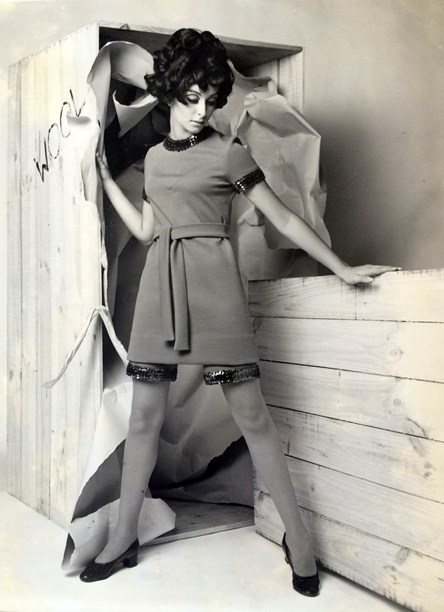
Emerald green Miss Deb double knit jersey top and hot pants, part of a New Zealand Wool Board promotion in the 1960s. Image © Maurice Mihotich.
When Maurice returned to New Zealand in 1960, having spent five years training and working as a designer and pattern-cutter in London and Montreal, he found the fashion climate "good, but staid". Prior to starting Miss Deb, he designed dresses for Parisian Coats which, along with Selby, Classic, Roystyles and Southwell, was one of the leading fashion manufacturers of the time.
Of the mini-dresses and skirts in the first Miss Deb collections, Maurice says they were never excessively short. "Drawings in newspaper ads, placed by department stores who stocked the label, always depicted our clothes as being much shorter than they actually were." Similarly, in the 1970s, ads featuring Miss Deb flares showed figures with disproportionately long legs.
Jackie Holme, Stephanie and Vicky Overton and Judith Baragwanath were among the top 1960s models to be photographed by Desmond Williams for Vogue New Zealand, the New Zealand Wool Board and the company’s own promotions, wearing Miss Deb. Maurice also recalls Maysie Bestall-Cohen (later the co-ordinator and compere of the Benson & Hedges Fashion Design Awards), modelling a print dress from his debut range for a fashion feature in the Auckland Star.
He called his label Miss Deb, Maurice explains, because "everything was Miss in those days. Debutantes were fashionable then, and the name summed up the mentality of the clothes". In an interview in Fashion Quarterly in 1989, he dismissed the suggestion that the name, like coming-out balls, had become passé. "A name is only passé if it gets no response and we certainly don’t have that problem."
With a reputation for good design, quality fabrics and a high standard of manufacture, Miss Deb sold successfully in department and specialty stores throughout the country for 32 years. "During the 1960s and 1970s, import licensing was in place," says Maurice. "There was little overseas competition. When trade between New Zealand and Australia was relaxed in the 1980s, it became profitable to export." Miss Deb started exporting to Australia in 1978.
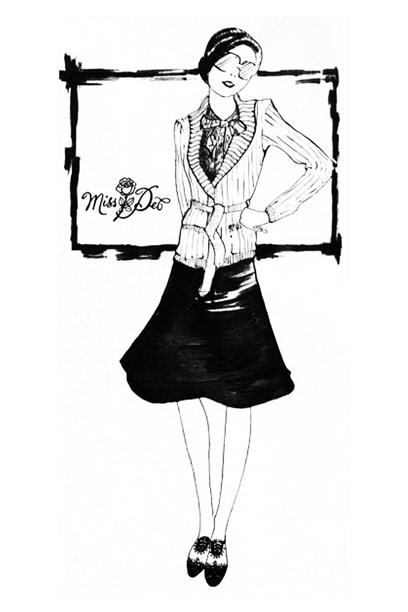
Miss Deb advertisement in Apparel magazine 1974, showing the original rose logo. Image © Maurice Mihotich.
Initially, Miss Deb was totally youth-oriented, influenced in the 1960s by the London fashion scene, flower power and hippy culture and, in the 1970s, by disco and psychedelia. As the business expanded, the focus became broader. Miss Deb developed a more sophisticated image and a second label, Cinnamon, was introduced to cater for the trendy, younger market.

This chambray blouson jacket and pants was designed under the Cinnamon label in the 1980s. Image © Maurice Mihotich.
Miss Deb’s new look, comprising stylish co-ordinates, dresses, coats and cocktail-wear, found favour with professional women, among them Dame Cath Tizard, during her term as Governor General, and Helen Clark when she was the Leader of the Opposition.
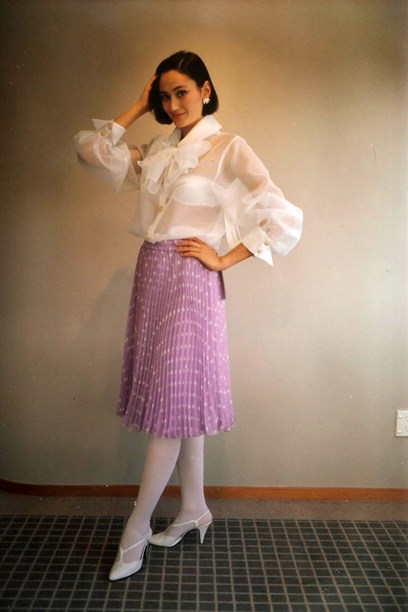
Miss Deb polka dot plisse skirt and see-through blouse from the mid-1990s.
The only fashion competition Maurice can recall entering is the Eve Magazine Fashion Award in 1970. "The midi had just come out and we won with a cape, top and midi skirt in brown wool jersey produced by a New Zealand mill." Auckland model Anne McClurg, remembered today for her elegance and poise, modelled the winning outfit.
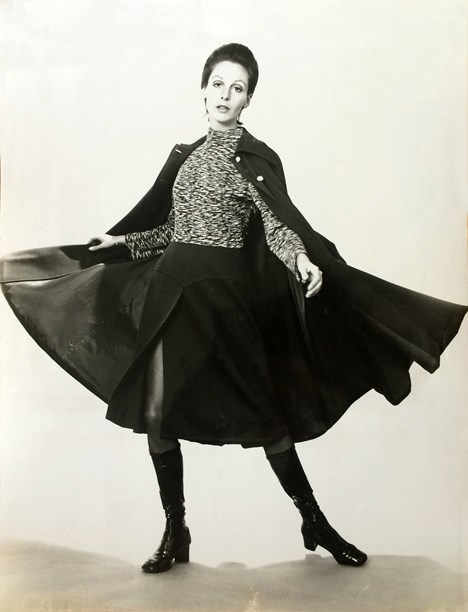
Anne McClurg models the Miss Deb ensemble that won the Eve Fashion Award in 1970.
In later years, Miss Deb participated regularly in the non-competitive Corbans Fashion Collections, described by Maurice as "excellent, because of the press and television coverage they provided". A resort look, featuring softly pleated skirts and slouchy pants in 1990, was followed in 1991 by simple shift dresses in bright colours and, in 1992, by wrap tops and sharp-shouldered jackets and short skirts in sherbet pastels and navy blue.
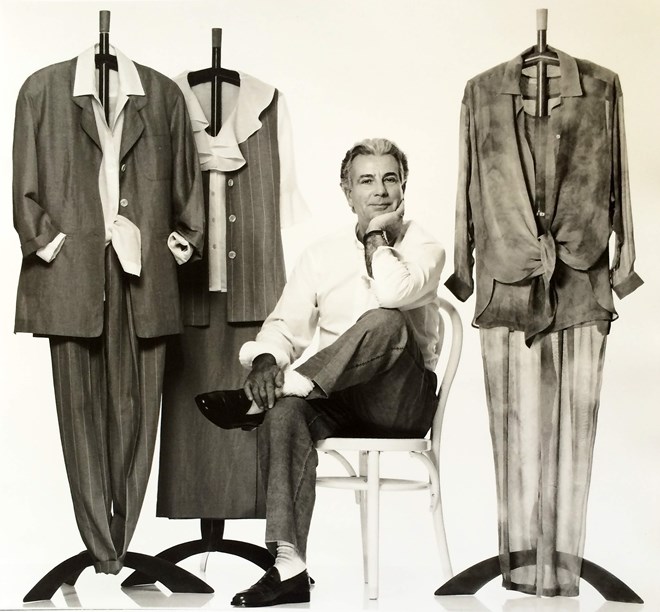
Maurice Mihotich in 1993. Photo by Desmond Williams.
Cheap clothing imports began flowing into New Zealand in the 1990s and this had a major negative effect on local fashion manufacturers, causing many to either close down or move their business off-shore. After the closure of Miss Deb in 1995, the Mihotichs’ started the Maurice Mihotich label, a small, upmarket range for professional women, which they continued to produce in Auckland until 2006.
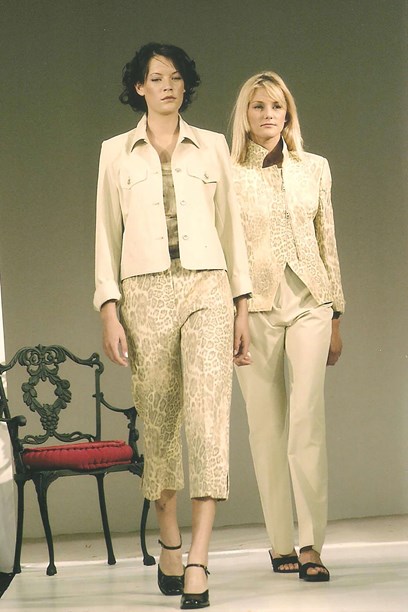
Maurice Mihotich label tailored separates on show at an in-store fashion parade in the 2000s. Image © Maurice Mihotich.
Now retired, Maurice Mihotich is currently working on his fashion 'memoirs', a series of mural-style paintings depicting five decades of his clothing designs.
Text by Cecilie Geary. Banner photo from Fashion Quarterly, Summer 1989.
Last published August 2014.